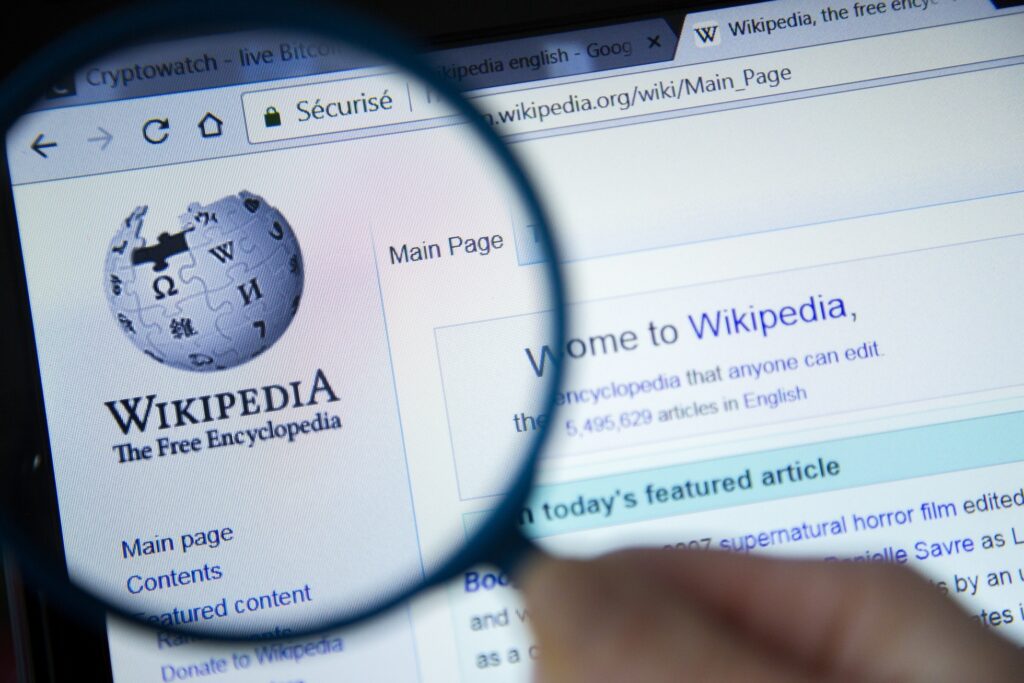Publicity and Propagation in Defamation Cases

In the Japanese Penal Code, it is stipulated that,
“A person who defames another person by making allegations in public, regardless of whether such facts are true or false, is punished by imprisonment or imprisonment without work for not more than 3 years or a fine of not more than 500,000 yen.”
Article 230, Paragraph 1 of the Japanese Penal Code
Publicity, or the indication of a fact or expression of an opinion or critique to an unspecified or large number of people, is a requirement for defamation under the Penal Code. If there is no publicity, defamation does not occur. However, even if the communication is to a specific few, if there is a possibility of propagation to an unspecified or large number of people, it can be considered defamation.
So, how does this publicity relate to defamation in civil law? There are cases where this becomes an issue in defamation on the internet.
Defamation under the Civil Code and Publicity
There is no explicit provision in the Civil Code that requires publicity as a condition for defamation as a tort.
“A person that has intentionally or negligently infringed the rights or legally protected interests of another person is liable to compensate for damage resulting in consequence.”
Article 709 of the Japanese Civil Code
“A person liable for compensation for loss or damage pursuant to the provisions of the preceding Article must also compensate for loss or damage other than of property, regardless of whether that person infringed the body, liberty or reputation of another person, or infringed property rights of another person.”
Article 710 of the Japanese Civil Code
However, in current practice, publicity is required. The essence of defamation is the lowering of social evaluation, but the concept of “society” includes an unspecified or large number of people, and it is difficult to say that social evaluation is lowered by statements to a specific few.
Therefore, it has been required that civil defamation be committed against an unspecified or large number of people, and there have been a series of court precedents.
What is “Unspecified or Numerous”?

What does “unspecified or numerous” mean, and in what cases and to what extent is it recognized?
There was a case where a professor at a law school sued a university corporation and five professors for damages in relation to a workplace dispute, demanding compensation for emotional distress from the university corporation.
The Takamatsu High Court, in relation to this internal dispute, stated that “In a professional graduate school where the maintenance and improvement of educational standards are emphasized, it is expected that faculty members will discuss and criticize the content and methods of instruction. Unless the manner of speech between professors regarding the content of instruction, etc., is significantly inappropriate, it should be considered a legitimate business act.” However, regarding a statement made by a professor at a law school faculty meeting,
“With regard to the appellant’s appointment as a court mediator, he questioned the fact that the appellant has not reported to the court the fact that he has been attending a psychosomatic medicine clinic and that he has been excluded from teaching at the Graduate School, and he stated that he would report the matter to the Supreme Court himself, the above-mentioned remarks were made without any relation to the authority of the Faculty Council of the Graduate School, and thus lacked any necessity. In addition, the intent of the statement was to suggest that the court would be disadvantaged by providing the above privacy information to the court, which is an offensive intention. Even considering the fact that this occurred in a faculty meeting, which is a relatively closed occasion, it is inevitable to say it is unlawful.”
Takamatsu High Court, April 19, 2019 (Heisei 31) Judgment
The court certified defamation, and ordered the university corporation to pay compensation of 770,000 yen which is higher than 110,000 which the first trial, Takamatsu high court had certified. It is interesting that the comment was made in a relatively closed occasion, and although the number of people is not clearly noted, as the comment was made in a faculty meeting of local national university’s law school, approximately only around 20 people were present.
In addition, on the email that the professor sent to other 4 professors, Takamatsu high court stated;
“The content of the email, which refers to the appellant as a ‘foolish beast’ and claims that the appellant was rubbing a woman’s thighs, and attaches a photo, is clearly an act that severely insults the appellant and infringes on his honor. The fact that the appellant committed the act indicated above and attached a photo related to it has no meaning in terms of the appellant’s punishment or treatment decision, and it is recognized that the expression in the email was made for the sole purpose of attacking or slandering the appellant’s personality, and it cannot be recognized as a fact related to public interests or as something done for public benefit.”
Takamatsu High Court, April 19, 2019 (Heisei 31) Judgment
It is worth noting that the court has indicated this.
From the problem consciousness of whether it is okay to deny defamation just because the direct expression partner is a specific few people, the theory of propagation, the possibility of propagation, which has been developed in the precedent of criminal defamation, has been used in civil defamation. However, the judgment does not mention the possibility of propagation, so it means that the court recognizes about 20 people as “numerous” and also considers 4 people as “numerous”. In the past, there was a case where publicity was denied for 4 people (Tokyo District Court, October 7, 2010 (Heisei 22) Judgment).
Examples of Recognizing the Possibility of Propagation
There have been cases where a condominium management company has sought damages from a member of the management association board for distributing documents that defame the company’s reputation and repeatedly engaging in illegal activities such as threats.
Despite a resolution being in place to conduct a seismic diagnosis of the condominium, one of the board members pointed out to the other 11 members via fax that the implementation of the seismic diagnosis was delayed due to the insidious and malicious obstruction by the management company. He criticized the management company for prioritizing vested interests and face-saving, and committing numerous wrongdoings. While acknowledging that this was sent to the 11 members via fax, it was recognized that “it is not necessary to state facts or opinions directly to an unspecified number of people in order for the facts or opinions to be made public. Even if the facts or opinions are made to a specific few, it is sufficient if there is a possibility that they can be propagated to an unspecified number of people.”
Therefore, Document 1 in this case was distributed to the 11 directors of the management association, but given the nature of the document, which raises issues about the management of the condominium, such as the seismic diagnosis, it can be said that the contents of the document could have been propagated to the condominium owners and tenants through the directors. Therefore, its distribution can be considered to have been made public.
Tokyo District Court, August 27, 2009 (2009)
While considering the 11 members as a specific few, the possibility of propagation was recognized. Along with the fact that a total of 21 types of documents related to this case were persistently distributed to the condominium owners and tenants, the court acknowledged the intangible damage to the condominium management company and ordered the board member of the management association to pay 1 million yen for the damage.
Internet and Publicity

Expressions on the internet, such as on bulletin boards, newsletters, and mailing lists, are based on the premise that an unspecified or large number of people will view them, so they are generally recognized as being public. However, in reality, there are many cases where only a small number of people actually view the content, even though theoretically anyone can view it. Nevertheless, many court precedents do not grant exemption simply because the number of accesses is small.
There have been cases where a company and its management have requested the disclosure of sender information from an intermediary provider, claiming that they were defamed on a website that posts various corporate information submitted by viewers that provides job seekers with useful information for job hunting.
The Tokyo District Court ordered the disclosure of sender information, stating that it was clear that the postings made by the sender on the website, such as “The president is a rare one-man show, he is violent and crude, and it is commonplace for him to hit and kick executive employees during meetings,” “He finds his favorite girl among the employees and makes her his mistress. He currently has several mistresses,” “Last year, he crushed an employee who was planning to expose the dirty part of the company using a gang. Now he seems to be troubled by being threatened by that gang,” etc., in the free comment section, were infringing on the plaintiffs’ honor and credit.
In this trial, the intermediary provider argued that “In order for a tort to be established due to defamation, it is necessary that damage that should be compensated with money has actually occurred, so it is not enough to simply put an unspecified number of people in a position to know the facts. The number of accesses to this article, including those made by the plaintiffs, is about seven, so no substantial damage has occurred, and no tort has been established. Even if damage has occurred, it is limited.” However, the judgment countered this by saying,
In the case of defamation on the internet, a tort is established when an article that lowers the social evaluation of others is placed in a position where an unspecified number of people can view it, and the person who is the subject of the article is at risk of being evaluated according to the content of the article. According to the above recognition, this article has been placed in a position where an unspecified number of people can view it for about one year and two months, so even if the access to this article was about seven, it cannot be denied that a tort has been established.
Tokyo District Court, January 29, 2009 (Heisei 21) Judgment
Therefore, even if there were only about seven accesses, the judgment is that a tort is established because “an unspecified number of people are put in a position where they can view it, and the person who is the subject of the article is at risk of being evaluated according to the content of the article,” and it cannot be denied that a tort has been established.
Email and the Possibility of Transmission
There have been cases where emails sent by company representatives and employees to trading companies, stating that a former employee had committed criminal acts such as breach of trust and embezzlement, and had a criminal record for drug possession and use, were judged to have defamed the former employee’s reputation.
It is often said that emails have the potential to be propagated because they can easily be viewed by third parties through forwarding. The process of recognizing email transmission as having the potential for propagation is an interesting case.
The email also stated that the former employee had inflated the remuneration paid to models and talents from the company and pocketed the kickbacks. The company argued, “The act of sending an email is usually a presentation of facts to a specific and small number of people, and it is not something that is actually announced to an unspecified number of third parties, and there is no public nature unless there is a possibility of it. In this case, the individual names of the persons in charge of each trading partner, etc., are clearly stated as the addressees, and if they are indiscriminately disclosed, there is a high risk of new disputes such as defamation and obstruction of business arising from the content of the fraudulent claim for remuneration. There is no plan to disclose it to third parties, and there is no fact that the recipient actually propagated it to third parties, so there is no possibility that the content of the email in this case will be propagated to third parties, and there is no public nature.” However, the Tokyo High Court ruled,
“The act of sending the email in this case, although addressed to specific individuals for each email, is addressed to as many as 18 people, and the content is an important matter related to the business of the defendant company, asking not to overpay. It is a content that urges caution by stating that the claims from the appellants are unjust to each trading partner, model, and talent. Naturally, it is necessary to make the content known to the officers and persons in charge of each trading partner’s company. Then, the content of the email sent in this case is, by its nature, content that is made known to not only the direct addressees of the destination but also each related party, and should be said to have the potential to be propagated to a wide range of unspecified related parties. Therefore, it is not possible to adopt the argument of the defendant company that the content of each transmission in this case had no possibility of being propagated to third parties.
Tokyo High Court, July 17, 2014 (Heisei 26) Judgment
The court changed the original judgment demanding a payment of 330,000 yen and ordered the company and its management to pay 500,000 yen.
Since it was an email to 18 people, it would not have been strange if public nature was recognized, but the possibility of propagation was recognized. In the case of email, it is necessary to pay careful attention.
Summary
Considering the potential for propagation, it is necessary to take great care even for posts on social media. It is dangerous to think that “defamation does not occur if the scope of the post is limited to friends or followers”.
If you make a post limited to friends on Facebook and have dozens or more friends, there is a high possibility that it will be recognized as public. Even if there are fewer, there is a possibility that the potential for propagation may be recognized. For those with a private account on Twitter, if there are dozens or more followers, it is likely to be seen in the same way as a public account.
Publicity and the potential for propagation in defamation are new and sensitive issues, so please consult with a lawyer who has extensive experience in slander and defamation.
Category: Internet





















